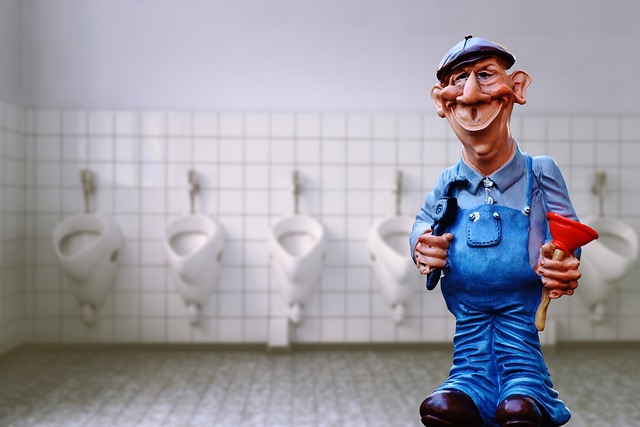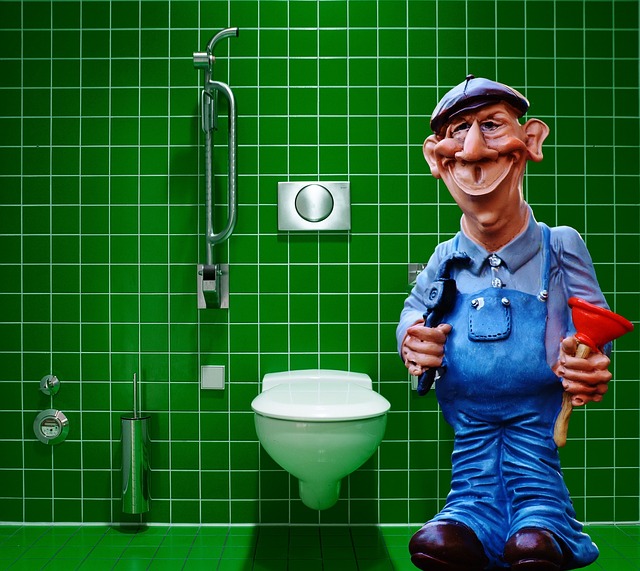Plumbers employ advanced tools like high-tech cameras and listening devices for efficient, accurate leak detection. These innovations enable them to identify hidden leaks in hard-to-reach areas, diagnose issues through real-time visual feedback, and precisely detect subtle problems like pipe breaks or blockages. Case studies show successful implementations in commercial (e.g., heat-sensing cameras for pipe leaks) and residential settings (e.g., night vision & motion sensor cameras connected to smartphone apps for timely alerts).
“Stay ahead of plumbing leaks with cutting-edge technology! This comprehensive guide explores advanced leak detection methods, highlighting the invaluable role of cameras and listening devices in a plumber’s toolkit. From understanding common sources and signs of leaks to successful case studies, we delve into how these innovative tools are revolutionizing the industry. Discover why plumbers are embracing camera/device technology to offer faster, more effective solutions, ensuring peace of mind for homeowners.”
- Understanding Plumbing Leaks: Common Sources and Signs
- Traditional vs. Advanced Leak Detection Methods
- The Role of Cameras and Listening Devices in Modern Plumber's Toolkit
- Case Studies: Successful Implementation and Benefits of Camera/Device Technology in Leak Detection
Understanding Plumbing Leaks: Common Sources and Signs

Plumbing leaks can go unnoticed for long periods, leading to significant water waste and increased utility bills. Understanding common sources and signs is crucial when it comes to prompt detection. Some of the most frequent leak origins include faulty pipes, especially in older homes where corrosion or damage are prevalent; poorly sealed joints or fittings; and broken or misaligned valves.
Leak symptoms vary but often include persistent drips from fixtures, walls, or ceilings, as well as mold growth and musty odors. Water meter readings that consistently rise despite no apparent usage can also signal a leak. A professional plumber is equipped to identify these issues using advanced tools, including cameras and listening devices, to detect leaks hidden behind walls or under floors.
Traditional vs. Advanced Leak Detection Methods

In the realm of leak detection, traditional methods have long been the go-to for plumbers and homeowners alike. These involve visually inspecting pipes and fixtures for any signs of water damage or unusual wet spots. However, such techniques are often time-consuming and may not capture hidden leaks nestled behind walls or under floors. This is where advanced leak detection methods come to the rescue.
Modern technology offers sophisticated solutions like camera-based systems that can detect even the tiniest dribbles by analyzing video footage frame by frame. Additionally, listening devices equipped with sensitive microphones can pick up on peculiar noises indicative of water seepage, providing an early warning system for potential issues. These advanced methods not only enhance efficiency but also ensure that leaks are identified swiftly, preventing further damage and costly repairs, as well as giving plumbers a clearer picture to effectively target their solutions.
The Role of Cameras and Listening Devices in Modern Plumber's Toolkit

In the modern era, plumbers are equipped with more advanced tools than ever before, and cameras and listening devices have become indispensable assets in their toolkit. These innovative technologies play a pivotal role in enhancing the efficiency and effectiveness of plumbing services. By employing high-tech cameras, plumbers can now inspect hard-to-reach areas with ease, allowing them to detect leaks or blockages that were previously difficult to locate. This real-time visual feedback enables professionals to diagnose issues swiftly and accurately.
Listening devices have also revolutionized the way plumbers approach their work. These tools enable them to pinpoint exact locations of leaks by detecting subtle sounds that may not be audible to the naked ear. This additional layer of detection ensures that even the most elusive water leaks or gas escapes are identified, preventing potential disasters and costly damage. With these advanced methods, plumbers can offer more comprehensive services, ensuring customer satisfaction and safety in homes and businesses alike.
Case Studies: Successful Implementation and Benefits of Camera/Device Technology in Leak Detection

Plumbers have embraced camera and listening device technology as a game-changer in leak detection, leading to successful implementations across various settings. One notable case study involves a large commercial building where a plumbing issue went undetected for months, causing significant water damage. The introduction of advanced cameras with heat-sensing capabilities allowed plumbers to identify the source of the leak swiftly—a hidden pipe beneath the floor that would have remained unnoticed otherwise. This early detection prevented extensive repairs and costly renovations.
Another successful instance is in residential areas where homeowners have benefited from this technology. Cameras equipped with night vision and motion sensors have been deployed to monitor suspicious activities, including potential plumbing leaks. In one such case, a family received an alert on their smartphone from a connected camera system, indicating a burst pipe in their basement. This timely notification enabled them to contact a plumber promptly, minimizing water damage and ensuring a more affordable repair process compared to discovering the leak at a later stage.
Modern plumbing leak detection has advanced significantly with the integration of cameras and listening devices, offering plumbers a powerful toolset. These innovative technologies not only detect leaks more accurately but also provide detailed insights into their sources. By leveraging case studies that demonstrate successful implementations, it’s clear that camera/device technology is revolutionizing the plumber’s approach to leak detection, ensuring faster repairs, reduced damage, and ultimately, greater customer satisfaction.
